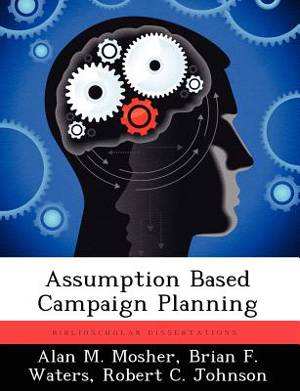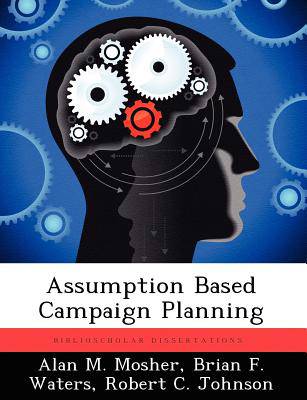
- Afhalen na 1 uur in een winkel met voorraad
- Gratis thuislevering in België vanaf € 30
- Ruim aanbod met 7 miljoen producten
- Afhalen na 1 uur in een winkel met voorraad
- Gratis thuislevering in België vanaf € 30
- Ruim aanbod met 7 miljoen producten
Zoeken
Assumption Based Campaign Planning
Alan M Mosher, Brian F Waters, Robert C Johnson
Paperback | Engels
€ 78,95
+ 157 punten
Omschrijving
After the 11 September 2001 surprise attack on the World Trade Center and the Pentagon by al Qaida terrorists, planners from all over the US Army were tasked to join an Army planning team to develop the Army's Strategic Campaign Plan (ASCP) in support of Operation Enduring Freedom. The Deputy Chief of Staff for Operations and Plans (DCSOPS) formed the team around officers from the office entitled DAMO-SS and other officers displaced from the Pentagon due to the damage caused by the terrorist attack. Three School of Advanced Military Studies (SAMS) Fellows based out of Fort Leavenworth, Kansas were part of this team. The purpose of the ASCP was to permit the Army to quickly begin planning and to provide direction for the Army to meet its obligations under Title 10 of the U.S. Code. The Army needed to quickly transition from a peace time to a war time status and be prepared to rapidly respond to directions from the highest levels of the nation, the Joint Staff, and the warfighting CINCs. The ASCP in its final form established the basis for the rapid transition from peace to war. This monograph discusses the challenges of planning at the strategic level of war, the techniques used to address those challenges, and the lessons learned experienced by the SAMS Fellows.
Specificaties
Betrokkenen
- Auteur(s):
- Uitgeverij:
Inhoud
- Aantal bladzijden:
- 56
- Taal:
- Engels
Eigenschappen
- Productcode (EAN):
- 9781249561996
- Verschijningsdatum:
- 28/09/2012
- Uitvoering:
- Paperback
- Formaat:
- Trade paperback (VS)
- Afmetingen:
- 189 mm x 246 mm
- Gewicht:
- 117 g

Alleen bij Standaard Boekhandel
+ 157 punten op je klantenkaart van Standaard Boekhandel
Beoordelingen
We publiceren alleen reviews die voldoen aan de voorwaarden voor reviews. Bekijk onze voorwaarden voor reviews.











